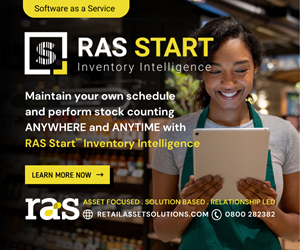Industry Focus
Artificial Intelligence Fact or Fiction?
“Artificial intelligence” is a term coined as late as 1955, but long before this—since the dawn of the computer-age—philosophers, scientists, and politicians alike have wondered and worried in equal measure over the awesome power, potential, and application of intelligent machines.
Sci-fi books and films popularising the negative role of artificial intelligence (AI) in society aren’t a new fad either. As early as 1927, the film Metropolis featured a robot that unleashes chaos in the streets of Berlin in the year 2026, and since then many more recent mainstream titles such as The Terminator series or The Matrix have perpetuated this negative perception surrounding the use of AI.
Meanwhile, in the real world, the truth couldn’t be more different, where in reality the field of AI has been maturing, developing, and scaling at a rapid pace. Each passing day brings greater advances in capability and a plethora of positive practical-use cases across all industries. In the retail industry, for example, the positive application of AI is being used to help businesses better understand the behaviours of their customers, both good and bad, in order to inform a wide range of strategies, from marketing to loss prevention.
Before we examine these applications, we need to answer a number of questions. Does AI mean that humans aren’t required to perform tasks? Does it make life easier? Is it as intelligent as a human? Is it “really” AI? These questions persist, despite the fact that the term has been around since 1955. This article will attempt to answer some of these questions and give a warts-and-all view of the power of AI, the challenges, the opportunities, and considerations in a retail setting.
AI—A Learning Experience
AI, like human intelligence, requires time to learn. Comparatively to other mammals, humans take an inordinate amount of time to learn basic functions like walking and communicating with each other. AI is faster than humans at learning as it has few distractions to contend with, and usually only has a few purposes, so it can solely focus on those.
But if AI has learned something elsewhere, why can’t it use that knowledge to understand in a new location? Just like with humans when changing jobs, it might be the same job title, but you will still need to understand the business, culture, terminology, and ways of working for the new business before you reach your potential. Likewise, AI needs to understand its new environment and dynamics before it’s firing on all cylinders.
AI vs. Humans
The learning process is pretty similar between humans and AI. But what are the differences? The key benefits are that AI is much more consistent, doesn’t suffer from fatigue or boredom from repetitive tasks, and is completely unbiased. Those are traits of humans where businesses lose time and money.
Just think through some of the challenges with human behaviour. People’s values, upbringing, personal life, morals, and so on give rise to differing behaviours and decisions across the entire population. AI, on the other hand, is completely void of that thinking set, giving it a distinct edge over humans when it comes to performing tasks.
Is AI ruling out the need for humans? Absolutely not. The reality of AI is that humans built it, so its capability is limited to that of a human being anyway. AI can also see things, at the moment, only in a black-and-white form. There is no grey, and we all know that the world doesn’t work that way in reality. Humans are required to add empathy and intervention, giving common sense to a situation.
By way of an example, let’s say you asked an automated car to take you to the airport as fast as possible. The car would drive at maximum speed, probably using the most direct route, which could end up in Police chases and dangerous situations for the passengers. AI has done what you asked it to, but the human touch is crucial in ensuring that the “rules” are maintained.
AI—Real or Fake?
Many products claim to be “AI” and many are. However, many aren’t. Take algorithms, as an example. Algorithms are complex mathematical calculations based on a set of rules that gives an output. Whilst valuable, this is not AI in reality. The decision-making process is programmed into a system, rather than that system learning by itself.
AI is also based on a set of rules or views. However, the software needs to make a decision and a conclusion. To make decisions, there is a need for the system to learn what “correct” looks like, and what “wrong” looks like. Therefore, the outcome can be significantly more valuable with AI.
The difference between real and fake AI is that real AI makes its own decisions. Fake AI simply follows a set of rules.
How AI Is Being Used in Retail
The manufacturing sector, particularly vehicles and mobile technology, is using AI more and more to do continuous and repetitive tasks. As mentioned previously, the consistency that you can get with AI is very beneficial.
In retail, there are many tasks that would benefit from AI a great deal. However, retailers have that great unknown of customers and behaviour inconsistency. It’s not a sterile environment such as a manufacturing production line, so the use cases are quite specific.
The drive for great service and efficiency savings in retail are two good use cases for AI. If the introduction of technology can make the customer journey more frictionless, that’s a positive. If in turn it can offer efficiencies for staff, a retailer’s biggest cost, that is a double benefit.
Amazon Go is arguably the best example of using AI to drive efficiencies and customer journeys. This is clearly a well-documented technology, but the intelligence built into the process is a joy to behold. Many retailers aspire to that level of AI in their bricks-and-mortar stores, but it is cost-prohibitive and impractical to implement in big box stores.
There are, however, components of this example that can be used for traditional retailing—from monitoring behaviours to ensuring everything is paid for.
The Role of AI in Loss Prevention
Loss prevention is a prime case for using AI. Let’s explore a couple of the component parts of loss and understand how the consistency of AI can mix with the human elements to combine a successful set of solutions.
Theft. The rudimental way of resolving theft is to throw resources, both human and physical protection, at the problem and stop people from stealing. It’s pretty effective if you have the right people, with the right skill set, and watching the store with people or protection is without a doubt a good deterrent. However, it is costly and unreasonable to expect this to be a sustainable way of operating, especially with margins being under pressure. Alternatively, retailers turn to essentially locking product up, which is also relatively effective where nothing is stolen, but the impact on sales is clear to see.
Let’s talk about a theoretical way of solving this problem using AI. Replacing a person, or indeed a security measure like tagging a product, might seem a step too far for some retailers. But what if AI could identify and alert humans to an event? What if the AI could actually improve the detection? Regardless of how good retailers’ security teams are, they cannot watch everything all of the time, whereas AI can.
There are ongoing pilots with major retailers at points of sale where AI has learned human behaviour and specific thefts, for example sweethearting, so that deliberately voided or non-scanned items are brought to the attention of the LP or security teams, each time, every time. Likewise, AI is being trialled in the detection of shoplifting where it has learned the difference between malicious and non-malicious or accidental concealment from the behaviours that preceded the item disappearing from view, a useful tool when trying to avoid false accusations and defamation of character claims.
Looking for certain behaviours 24/7 in stores seems like a good use of AI, yet the requirement for well-trained and well-skilled humans remains. They still need to add that judgement call, have the conversation, and deal with the problem. So, AI takes on the role of identifying crime. Humans still deal with it.
Self-Payment. The use of self-payment solutions is a growing trend across the world, and the reasons are clear to see. Savings in payroll, customers that want speed of throughput, and even increasing sales in some cases means self-payment is here to stay.
There are many LP teams, though, scratching their heads about how to curb losses arising from customers not scanning all products and not completing transactions. There are many providers looking to help with this problem, often with slightly different ways of doing so.
Again, having the right people helping customers is a good way of solving this problem, but they are often spending most of their time serving customers and getting involved in interventions such as age-restricted sales or weigh-scale issues. As they are doing that, they are distracted from the real issues.
Surely though, the best way is to identify that the correct product is scanned, every time, regardless of the method of self-payment? AI can do that. Yes, it will take time for AI to learn, but similar to theft, it can monitor constantly, and never tires of its task or gets distracted.
Imagine a world where this is possible. Back to Amazon Go. I had the opportunity to shop in a store with my family of four. All were picking product up and putting it back again, yet the system got the end result completely accurate. It is possible that products selected and paid for by customers can be charged accurately, by using AI rather than flooding the store with pick-up-and-go technology.
To achieve this, retailers need to identify all the areas of payment and scanning that exist. As it stands this essentially falls into four categories:
- Self-checkout (SCO)
- Mobile pay-and-go
- Handheld pay-and-go (provided by the retailer to the consumer)
- Manned checkouts
All these methods of payment have one thing in common—the scanner. A scanner is a pretty dumb piece of hardware, purely reading barcodes using lasers or cameras. But as the items pass that scanner, if there are cameras as well, the product can be positively identified.
Essentially, it becomes a pair of human eyes on every single scan. That is a robust way to solve this problem. I recognise some people will be reading this and saying, “We’ve tried this, and it doesn’t work.” The reality is that no UK retailer has invested the time and volume of information required to effectively give the AI a chance of learning. Let’s go back to the difference between a human and AI. Humans get better at doing tasks the more they do them. So does AI, but it learns significantly faster, and only needs to learn once.
If a retailer did invest that time and content, the results would be enormous, just as they are with experienced and competent people.
Does AI Take Away Responsibility from the Customer?
On the contrary, with AI you can ensure that the customer is given responsibility for the decisions, giving them “nudges” when the AI detects that they have made a mistake. Taking an example from self-checkout, the customer scans a banana, but the AI detects a banana was not shown to the scanner. Rather than immediately cause an intervention, which takes both the customer’s time and the employee’s time, the intervention can be dealt with by the customer. Simply asking, “Are you sure this is a banana?” will give the customer a second or even third chance to rescan the product to validate it is correct. If the AI still detects an error, only at that point would a member of staff be called. If the member of staff confirms that this product was a banana, the AI learns this. If they confirm it wasn’t, the AI learns this. So, when it sees the product again, it’s better informed. Complete this millions of times a week, across hundreds of different environments, and the AI learns very quickly. Indeed, it’s the customers teaching the system without knowing they are doing so and with only positive impact on them.
This, of course, improves productivity and also reduces loss. The customers who are inadvertently making errors are helped by the technology. The customers who are deliberately attempting to deceive the system are nudged into doing the right thing, but if they continue to choose not to, then an intervention can take place. This dramatically reduces the number of interventions as well, giving the member of staff only the most important events to deal with.
AI Working with AI
Continuing with the analogy of humans vs. AI, people are generally good at interacting with each other. But can AI interact with other AI? Absolutely, and it works best if it does. One AI system talking to another supercharges the benefits that can be achieved.
Let’s take an example in an LP setting as described above. If you stop a customer from stealing a product in the aisle, they will likely switch to stealing in some other way. To use the above example, they might switch to not scanning products at the SCO. The AI needs to work across both settings, and the employees in store need to understand how it works and when to step in. That locks down the opportunities that currently exist for theft, without investment into people or into hardened security measures.
Delivering excellence in customer service being such a key part of any retailers strategy, AI will always enhance the customer experience as well, along with improving employee efficiency. So, the more AI is used in a bricks-and-mortar store, the better the experience as well.
Is AI Available Now?
Yes! AI accuracy is consistently improving, through the development of R&D work, real-world applications, and centres of excellence. This has enabled providers to develop multiple tools that work together and improve loss, efficiency, and customer satisfaction.
If you take Fujitsu as one example, let’s take you through the journey that is possible.
Customers enter the store and their behaviour is tracked through the journey using AI to identify if they are acting out of the norm. They are traced through the camera systems and given a red, amber, or green status, and the appropriate personnel are alerted when a customer’s behaviour is identified as high risk.
Let’s say the customer is using a retailer-provided handheld to self-pay. The first step in this process is to ensure they are who they say they are. AI can validate this using facial recognition and the registration of age-restricted sales. As the customer is scanning in the aisle, the handheld can be watching that the product that is scanned is done so accurately. If it senses unusual activity or swapping, along with the CCTV system, an intervention takes place.
If the customer is using SCO, AI can identify that the user is scanning correctly, and again cause an intervention if issues are detected. If the wrong product is scanned, or if the customer walks away without paying, the technology can detect this as well.
To speed the checkout process up, Fujitsu is also sandboxing a new initiative that has two functions—age estimation and age verification. Age verification validates that this person has registered themselves and validated their ID. This makes the purchase process much quicker, more efficient for staff, and more robust in terms of legal requirements. Age estimation can be used when the customer has not yet registered, which reduces friction and difficult discussions at the till point asking for ID.
By way of an example, the customer journey can be enhanced significantly with AI, improving in-store efficiency and reducing loss. This brings bricks-and-mortar retailers much closer to the way forward for traditional stores, digitising the experience for the customer as well.
Can AI Be Used to Maximum Effect by One Provider Alone?
The reality is that most retailers have multiple technology providers, all of which need to work together to solve this problem. But why would they work together? Because retailers are the customers, and the reality is that AI needs all of the component parts to be firing on all cylinders in order for it to be most effective. Thinking back to a human growing up and learning, they need assistance from their parents, their teachers, friends, and so on. Everyone working together towards a common goal ensures that the best results can be achieved.
There needs to be recognition of this across the industry, that doing the right thing for the customers (retailers), regardless of the provider, is the way to move AI forward.
Moving Forward
AI is a clever and effective tool that is in its infancy in the retail sector, despite being a phrase that has been used for some time. No doubt, there will be other phrases that claim to “trump” AI that are already out there, but they all pretty much mean the same thing —how you use technology to deliver excellence in service and reduce loss.
However, to maximise its potential requires the same patience, understanding, and time that a human would require. If retailers invest in this, as so many have with other technologies, they will reap the rewards, and everyone wins. If solution providers work together, everyone wins.
Rather than killer robots, AI very much represents a more positive scenario where the present and future of bricks-and-mortar retailing is relevant and secure.
Steve Hewitt is the founder of Profitunity, which exists to drive the profitability of retailers through partnership with solution providers. He also is a co-founder at 40 Percent, driving improvement in retailers’ sustainability strategies. Previously he worked as consultant head of loss prevention for Waitrose, head of LP at Morrisons, and head of LP at Marks & Spencer. Steve has had a 26-year career in retailing. He has also delivered business cases around industry-leading RFID initiatives and new ways of engaging people in the art of the possible on total loss. Steve’s experience in the wider retail arena enables him to have a holistic view on loss and the levers to pull to drive profit in retailers.






